Two Virgins: The story behind John Lennon and Yoko Ono's intentionally 'unflattering', banned nude album cover
Long before a body-positive movement really existed, the couple tried to present themselves as simply 'two slightly overweight ex-junkies'
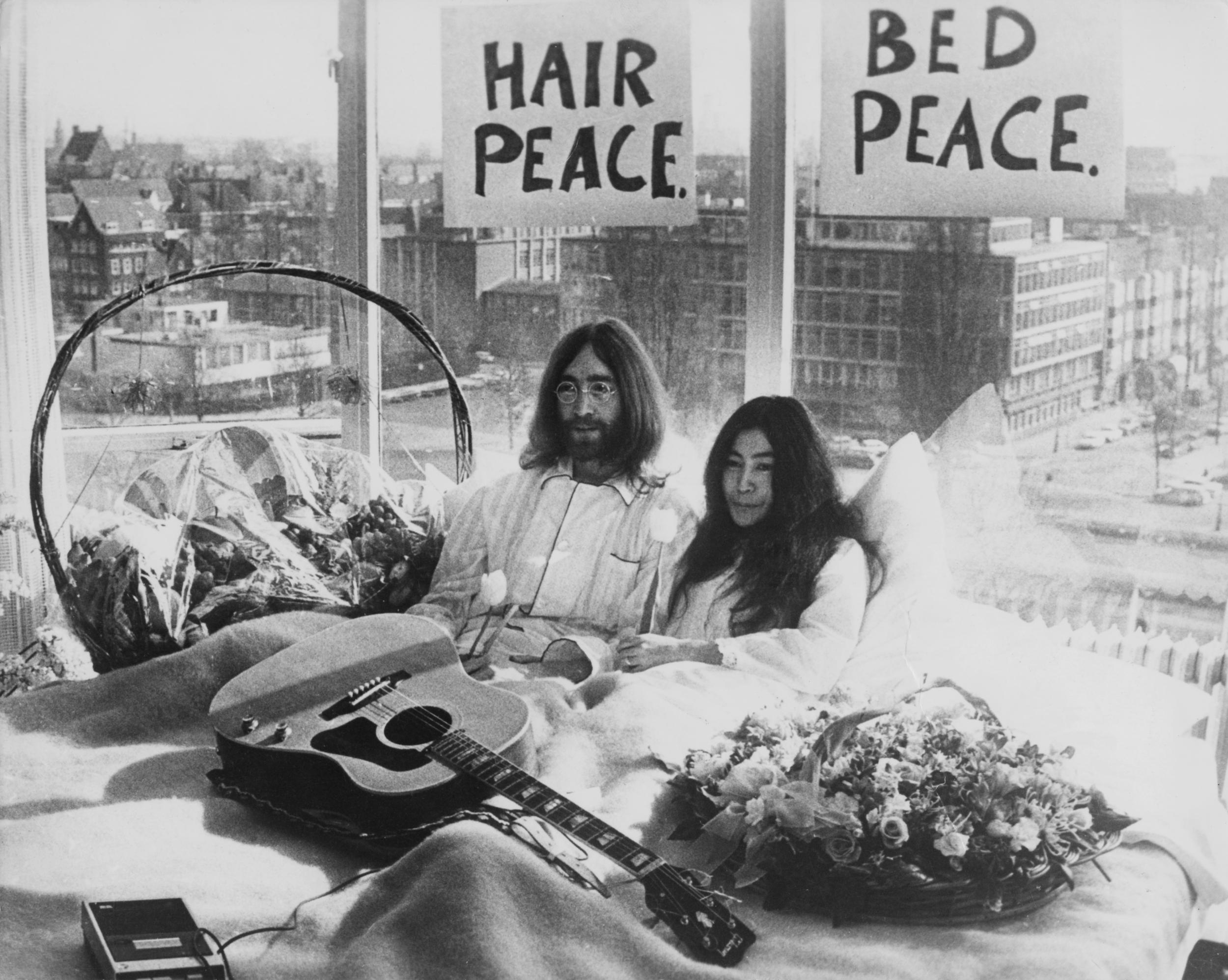
Your support helps us to tell the story
From reproductive rights to climate change to Big Tech, The Independent is on the ground when the story is developing. Whether it's investigating the financials of Elon Musk's pro-Trump PAC or producing our latest documentary, 'The A Word', which shines a light on the American women fighting for reproductive rights, we know how important it is to parse out the facts from the messaging.
At such a critical moment in US history, we need reporters on the ground. Your donation allows us to keep sending journalists to speak to both sides of the story.
The Independent is trusted by Americans across the entire political spectrum. And unlike many other quality news outlets, we choose not to lock Americans out of our reporting and analysis with paywalls. We believe quality journalism should be available to everyone, paid for by those who can afford it.
Your support makes all the difference.Unfinished Music No 1: Two Virgins, released 50 years ago this month, is only for the most ardent Beatles fans. The first of three experimental albums that John Lennon and Yoko Ono recorded centred around birdsong, garbled shrieking, amplifier feedback, tape loops and distorted instrumentation. The whole thing was committed to tape in a day-long session at Lennon’s Surrey house. “It was midnight when we finished, and then we made love at dawn,” Lennon recalled. “It was very beautiful.”
The avant-garde record either bored or infuriated most critics. Giving his thoughts on Lennon and Ono’s album, George Harrison was diplomatic but astute: “They were obviously into each other to such a degree that they thought everything they said or did was of world importance, and so they made it into records and films,” he said.
The album’s music was never going to make it into the mainstream (it only sold 5,000 copies in the UK), but its visuals caused quite a stir – the cover consisted of a single sepia-tinted image of the lovebirds standing completely naked.
“Even before we made this record, I envisioned producing an album of hers and I could see this album cover of her being naked because her work was so pure,” Lennon said in an interview with David Sheff. “I couldn’t think of any other way of presenting her.” The pair felt “a bit embarrassed” when the time came to peel off their clothes for the shoot, so Lennon took the photo himself using a time delay.
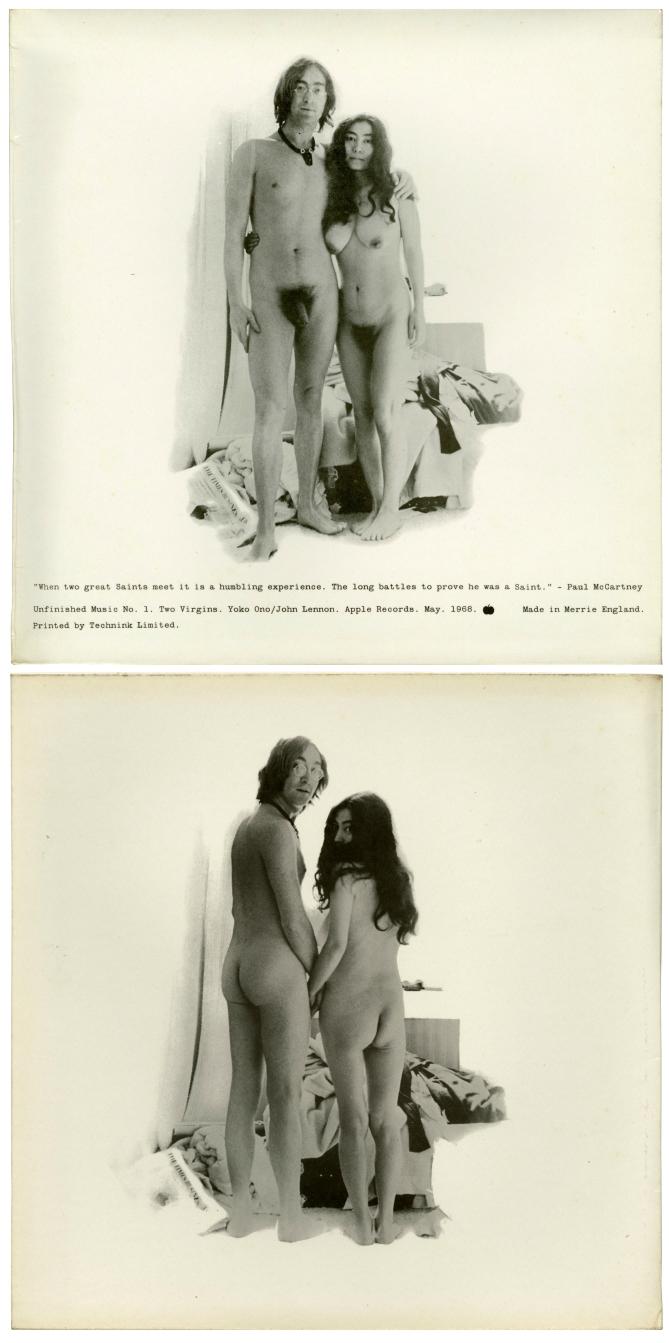
The album cover and reverse as Lennon and Oko intended it (Apple/Track)“It wasn’t a sensational idea or anything,” Lennon insisted, but it was always likely to incite the press as – aside from an unmade bed – the only other thing visible on the cover was a copy of The Times. This was not an obvious choice of paper for a notorious Leftist, and when Lennon showed Beatles bandmate Ringo Starr the artwork, the drummer was quick to pick up on the prop.
“The cover was the mind-blower,” Starr said in The Beatles Anthology. “He showed me the cover and I pointed to The Times: ‘Oh, you’ve even got The Times in it...’ as if he didn’t have his d*ck hanging out.”
“I said, ‘Ah, come on, John. You’re doing all this stuff and it may be cool for you, but you know we all have to answer. It doesn’t matter; whichever one of us does something, we all have to answer for it.’”
Sure enough, the papers did make a scandal of the photo, however innocent the intentions behind it might have been.
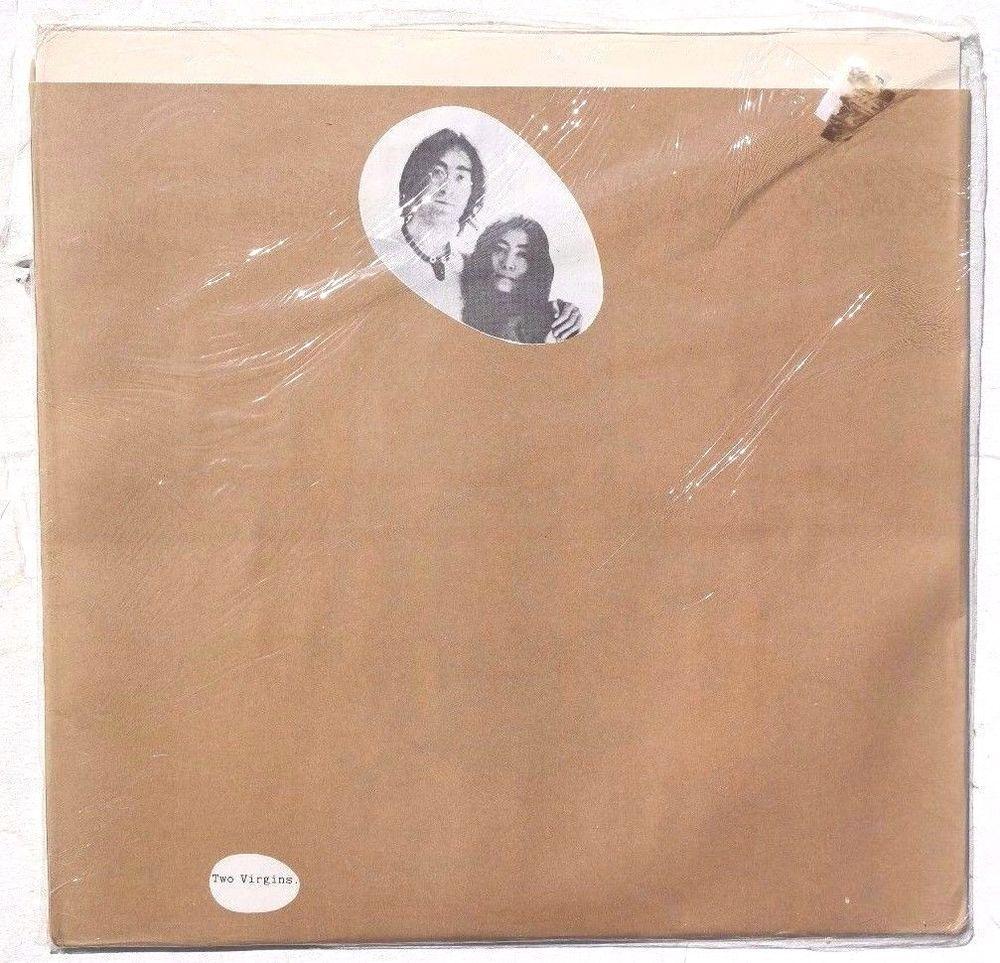
How the album ended up being displayed in stores (Apple/Track)The Beatles’ press officer Derek Taylor summed up the response in Anthology: “This filthy thing! ‘Look at These Filthy People!’ and there was a big circle over the naughty part and an arrow: ‘This is where the naughty part would be if people like us were not so decent. We wouldn’t dream of showing it to you – but aren’t they awful!’”
In a bid to highlight the hypocrisy of conservative reaction to the cover, Taylor had the idea of adding a line from Genesis chapter two to the cover: “And they were both naked, the man and his wife, and were not ashamed.”
Biblical justification didn’t help. Record label EMI flat out refused to distribute the record, and Track and Tetragrammaton only subsequently did so once copies of the LP were sheathed in brown paper bags. Nevertheless, many stores refused to stock the record, and in Newark, New Jersey, some 30,000 copies are thought to have been confiscated by police and impounded. Sissy Spacek even released a song about the cover titled: "John, You Went Too Far This Time".
Two Virgins, so named because the pair felt like “two innocents, lost in a world gone mad” and because they consummated their relationship after recording, was one of the earliest examples of the censorship of explicit album artwork.
In the 50 years since it was released, little has changed. In 1974, David Bowie’s half-man half-dog creature that lay on the cover of Diamond Dogs had its genitals airbrushed out. The same year, Roxy Music’s iconic cover for Country Life, featuring two women in lingerie, was given a reissue that only showed the pine bush that stood behind them. Jane’s Addiction were so infuriated by criticism of the naked clay figures on 1994’s Ritual De Lo Habitual, that the “clean” edition of the album consisted of a blank white square with the First Amendment (pertaining to free speech) written on it.
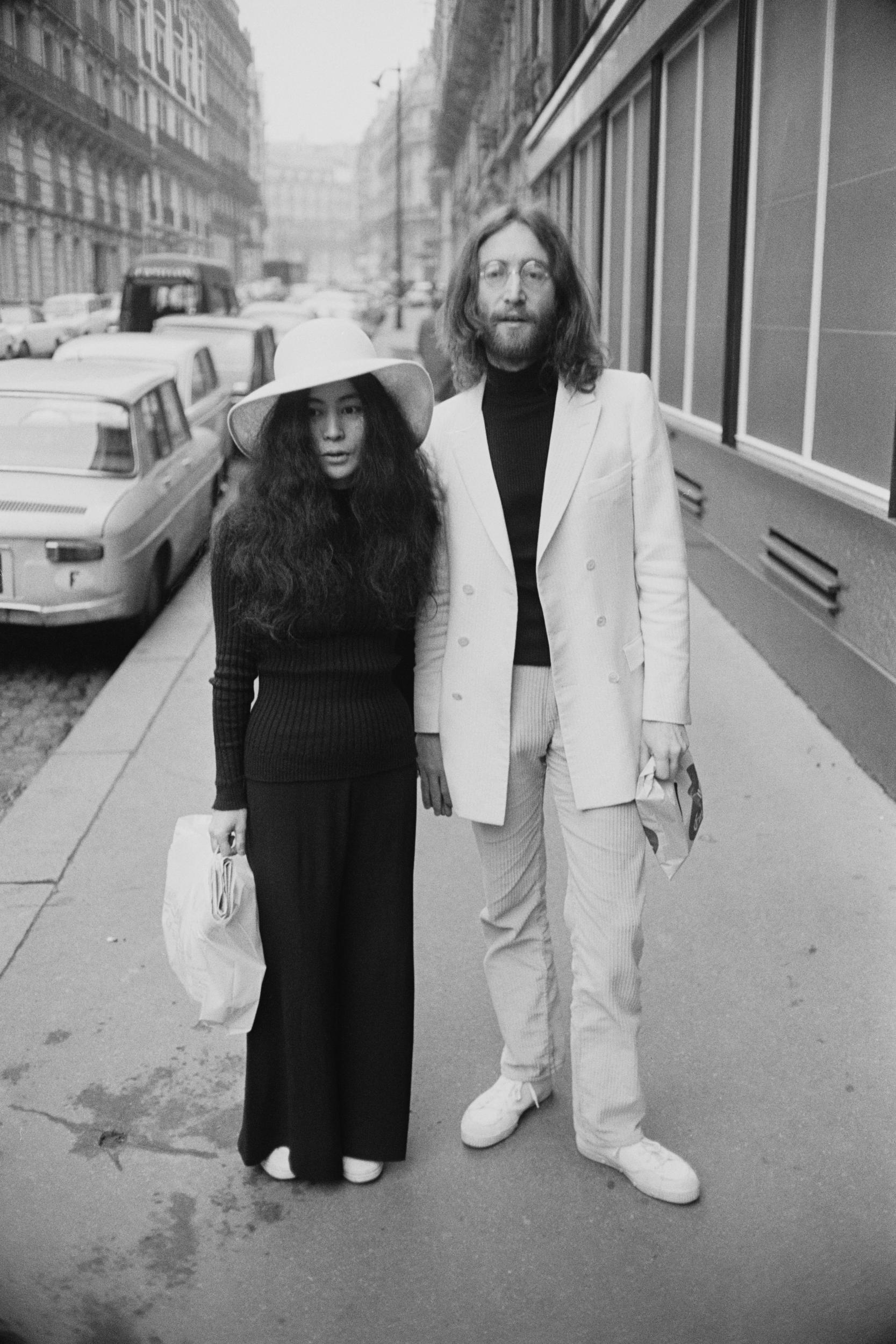
More recently, in 2010, certain stores rejected Kanye West’s My Beautiful Dark Twisted Fantasy because its cover featured a small drawing of West being straddled by a naked, winged woman. Amazon chose to use one of the alternate artworks for the album – a ballerina holding a wine glass – on its pre-order page.
Two Virgins‘s release coincided with the spread of the second wave of feminism and the publishing of Lew Louderback’s essay entitled “More People Should be Fat!”, which sought to correct body shaming and birthed a movement around it.
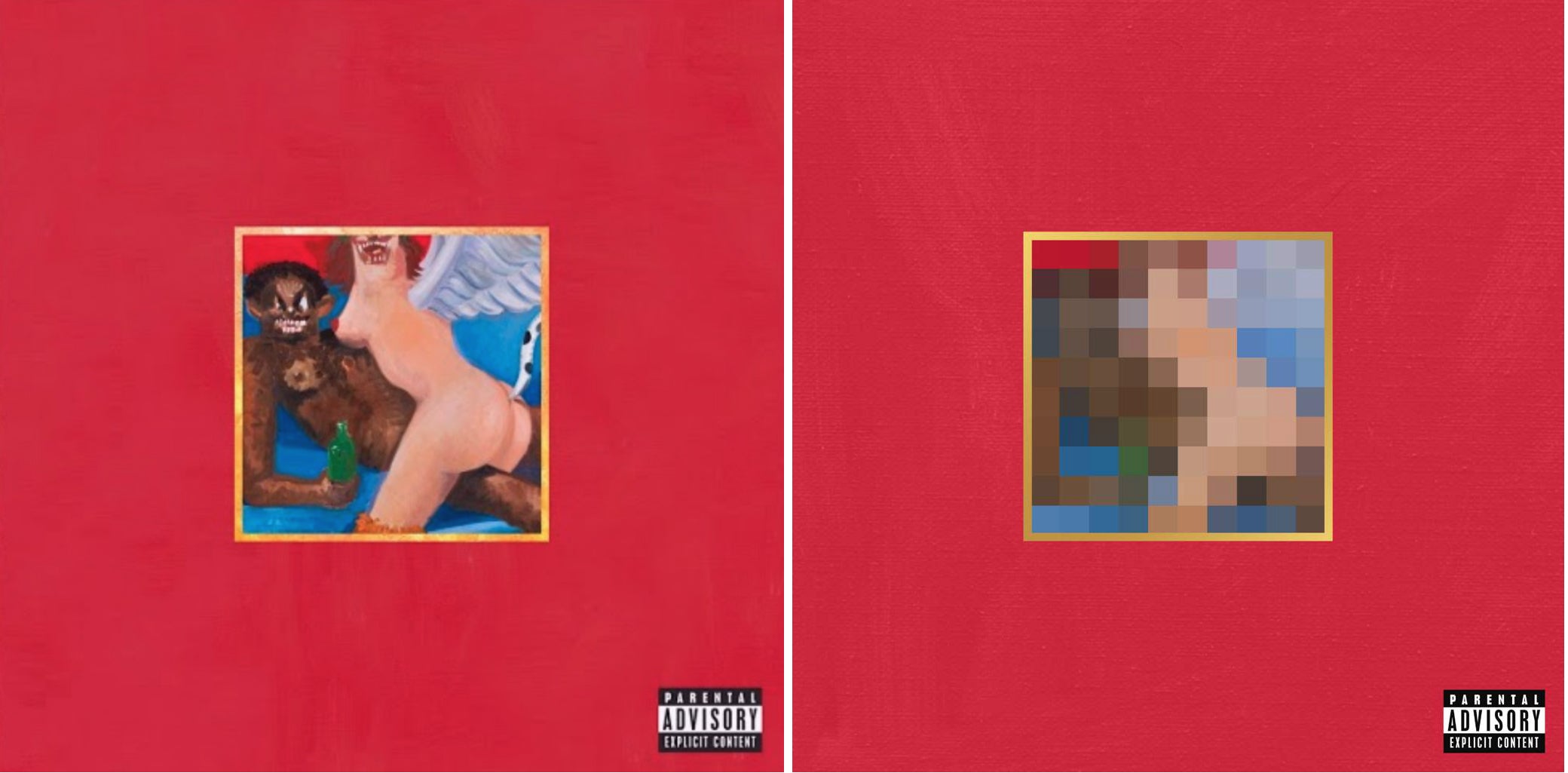
Some 42 years later, Kanye West’s ‘My Beautiful Dark Twisted Fantasy’ also faced censorship (Def Jam)“The picture was to prove that we are not a couple of demented freaks, that we are not deformed in any way and that our minds are healthy,” Lennon said in Anthology. “If we can make society accept these kind of things without offence, without sniggering, then we shall be achieving our purpose.
We tend to think of musicians talking about being confident in one’s body, however it may look, as a very modern thing, but Lennon and Ono were well ahead of their time in this respect.
“What we did purposefully is not have a pretty photograph; not have it lighted so as we looked sexy or good,” he explained. “There were a couple of other takes from that session where we looked rather nice, hid the little bits that aren’t that beautiful; we looked good. We used the straightest, most unflattering picture, just to show that we were human.”
Join our commenting forum
Join thought-provoking conversations, follow other Independent readers and see their replies
Comments